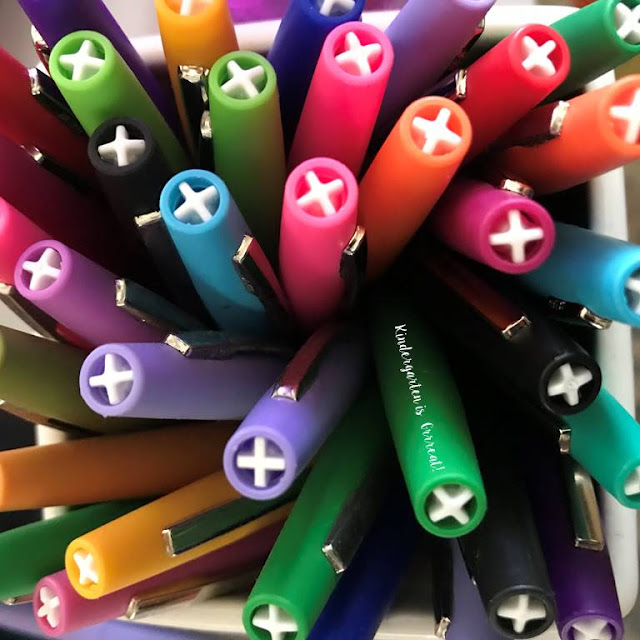First of all, if you haven't heard the most recent news, Flipgrid is now FREE, 100% free, for all educators. I had a paid account last year because I
How it Works
Grids & Topics
Basically, you create a grid. I view the grid as the overall topic, the big umbrella. Within each grid, you can have topics, these are the subcategories of your topic, the smaller ways you may want to organize your grid.
Below is an example from my Cultures grid (overall big idea). I created topics within the Cultures grid to help my students navigate the grid better - smaller ideas that still pertain to cultures - language, traditions, clothing, etc.
Passwords
Students now have to enter a password to access the grid. I love this feature. It is easy to post the password for your students in your classroom (my kinders are totally capable of using a password to access grids) and you can also send it home to parents so they can see what is being posted in the grids.Below is a glimpse at what that screen looks like!
Posting
Once students are in, they can post away! Download the Flipgrid app on any device. Students scan your code to access your grid or can type in the grid code. Then they simply push the "green plus", create their video, take a photo that will display on the grid, and then enter their information. My kinders simply put their initials.Kinders sharing book reviews on @Flipgrid today! #kindersCAN #flipgridfever pic.twitter.com/4MDTjTtg2l— Kelsey Cones (@MsConesTweets) October 16, 2017
Ways to Use Flipgrid

Many of these ideas are ideas that I shared last summer. At that point, I had only started playing with Flipgrid and hadn't had my kinders using the app yet. After a year of exploring, here are some things that really worked and some ideas that I will work on next year!
Community:
- Class introductions - have students share a little about themselves on a class community grid!
- Family introductions - do the same thing but have families share!
- Staff introductions - have staff share a quick blurb about themselves for the community to see!
- Flipped Learning - film a strategy, teach a short lesson - share it with families and the community to they can help their learner grow at home!
ELA:
- Book Reviews - students can leave reviews of a book after reading at school OR at home! I created a Grid that was for Book Reviews and had two topics - at school and at home.
- Retelling Stories - students can work on retelling a story - beginning, middle, end
- Vocabulary - students can explain the meaning of new vocabulary words. My goal for next year is to upload the word and students can respond to the video of the word with their definition.
- Writing - students can share their stories on Flipgrid
- Writing Process - create a grid with a topic for each state of the writing process - use it as a reflection tool for students to use during the writing process
Math:
- Shapes - have students find 2-D and 3-D shapes in the environment around them. Students describe the attributes of the shapes. Students may film the door and explain that it is a rectangle because it has two long sides and two short sides.
- Word Problems - this was a huge hit with my kids this year! Students write their own word problem and read it on Flipgrid. Students listen to the word problems, solve, and respond with their thinking and the answer!
- Cultures - Students share different aspects of their culture. This was a great way for families to get involved with student learning.
- Weather - Students give weather reports and can compare and contrast how weather changes over time.
Other:
- Genius Hour - students use this tool to check in during their Genius Hour projects!







